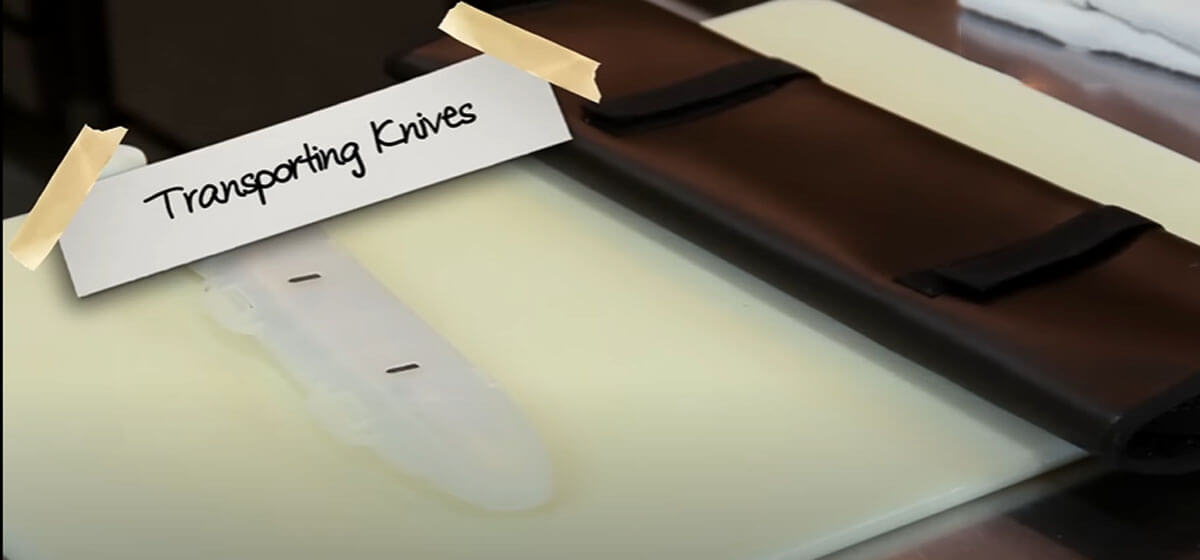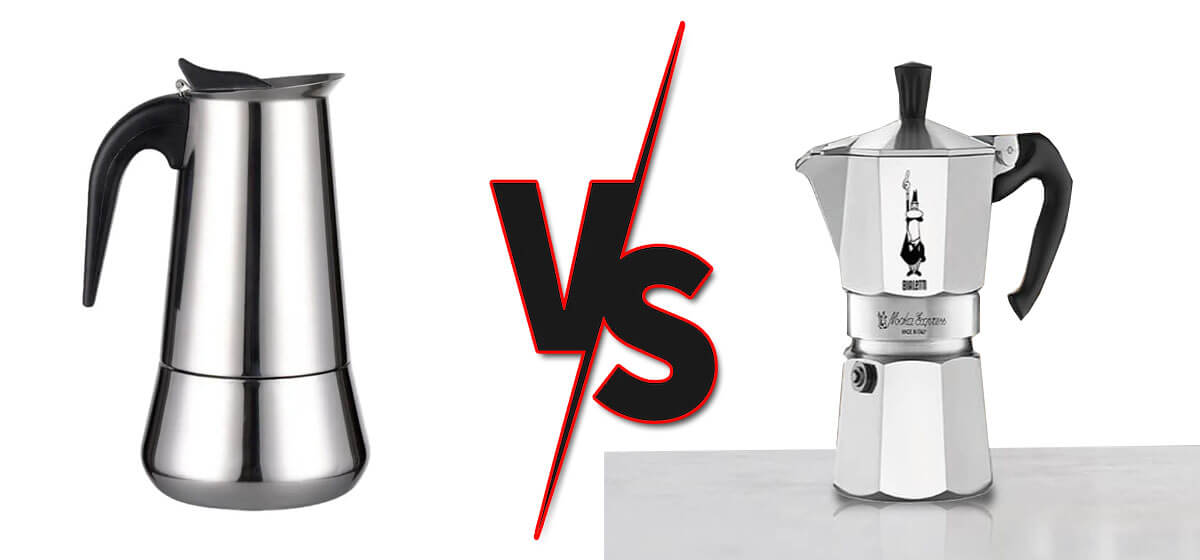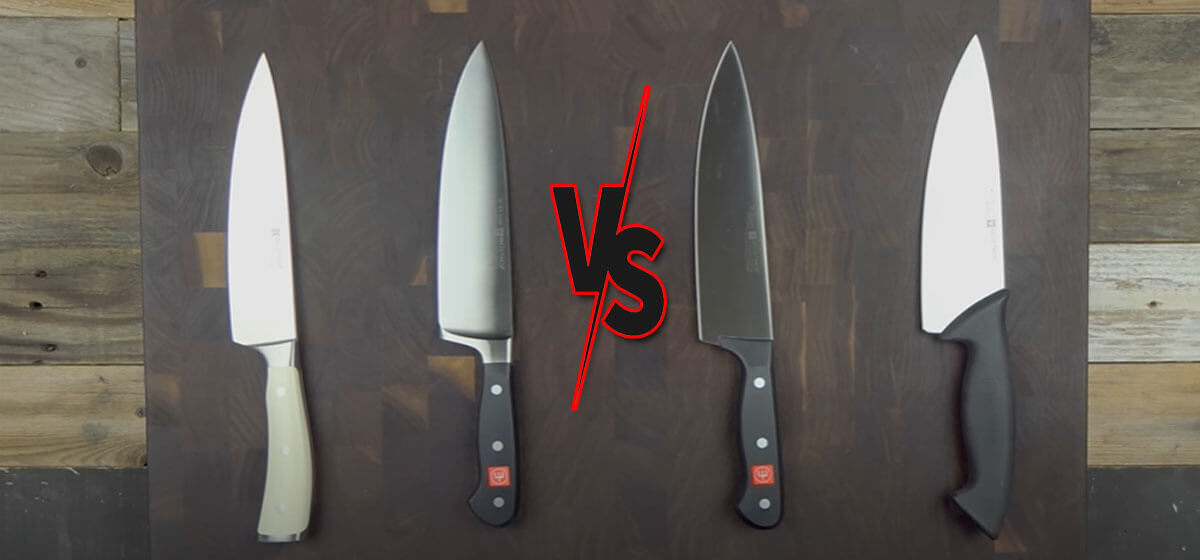How to Transport Knives : Safely and Securely Transport

As an Amazon Associate I earn from qualifying purchases.
To transport knives safely, wrap them in a thick kitchen towel or fold some non-corrugated cardboard and secure the blade in it with tape or rubber bands. For added protection, wrap the knife rolls or bundles with bubble wrap and pack them in labeled boxes to ensure safe transportation.
Transporting knives safely is essential to avoid accidents and damages during travel. Whether moving homes, traveling with culinary tools, or simply bringing knives for sharpening, taking proper precautions is crucial. By using kitchen towels, cardboard, and bubble wrap, you can protect the blades and ensure safe transportation.
Additionally, labeling the boxes will alert movers or anyone handling the knives about their contents. This comprehensive guide will provide valuable insights on how to transport knives safely and securely.
Essentials Of Knife Transportation
When transporting knives, secure them in a padded roll, wrap with bubble wrap for added protection, and pack in a labeled box. Ensure the blades are safely cushioned to avoid any mishaps during transportation. Utilizing a knife roll or a soft case can also aid in safe travel for chefs moving between kitchens.
Importance Of Safety In Knife Transportation
When transporting knives, ensuring safety is paramount. Proper handling and storage of knives not only protect the knives themselves but also prevent potential injury to individuals involved in the transportation process.
- Always use a secure, durable case or sheath to contain the knives and prevent accidental contact.
- Secure the blades to avoid any movement or slippage during transportation.
- Label the package as “sharp objects” to alert handlers about the contents.
Legal Considerations And Restrictions
Understanding the legal aspects of transporting knives is essential. Different regions may have specific laws regarding the transportation of sharp objects, and it is crucial to adhere to these regulations to avoid any legal repercussions.
- Research and comply with local and state laws regarding the transportation of knives.
- Double-check regulations concerning the type and size of knives that can be transported in specific areas.
- Ensure the knives are securely packed to prevent unauthorized access or mishandling.
Planning Your Knife Move
When planning a move involving knives, it is crucial to ensure their safe transportation to prevent any potential accidents. The process involves assessing the types and sizes of knives, choosing appropriate protective gear, and implementing proper packing techniques to ensure the safety of both the knives and individuals handling them.
Assessing Types And Sizes Of Knives
Before moving knives, it is essential to assess the types and sizes of the knives to determine the appropriate packing methods. Different types of knives such as chef’s knives, paring knives, and serrated knives may require specific handling and protective measures. Furthermore, assessing their sizes helps in determining the most suitable packaging options to ensure the blades are adequately secured during transit.
Choosing Appropriate Protective Gear
When transporting knives, it is crucial to select the appropriate protective gear to prevent any potential injuries. This may include thick kitchen towels, blade guards, or specialized knife rolls. Each type of knife may require different protective gear to ensure they are adequately secured and shielded during transport. Proper protective gear minimizes the risk of accidental cuts and maintains the sharpness of the blades.
Secure Packing Techniques
When it comes to transporting knives, ensuring they are securely packed is essential to prevent any accidents or damage. Whether you are moving homes, traveling with your chef’s knives, or simply need to transport them for sharpening, using the right packing techniques is vital. In this guide, we’ll discuss the materials needed for safe knife packing and provide a step-by-step guide to wrapping and packing your knives securely.
Materials Needed For Safe Knife Packing
Before you start packing your knives, gather the necessary materials to ensure they are well-protected during transportation. Here are the essential materials you’ll need:
- Kitchen towels or soft cloths
- Bubble wrap
- Packing paper or paper towels
- Packing tape
- Cardboard or a small moving box
- Marker for labeling
Step-by-step Guide To Wrapping And Packing
Follow these steps to securely wrap and pack your knives, ensuring they are safe for transport:
- Start by laying out a kitchen towel or soft cloth on a flat surface.
- Place the knives flat on the towel, ensuring the blades are fully covered to prevent any accidental cuts.
- Carefully fold the towel over the knives, creating a secure bundle.
- Wrap the bundle with a layer of bubble wrap for added protection.
- Secure the wrapped bundle with packing tape to keep everything in place.
- If you are using a small moving box, line it with crumpled packing paper or paper towels.
- Place the wrapped knives in the box, ensuring they fit snugly to prevent any shifting during transportation.
- Label the box clearly as containing sharp objects to alert yourself and others.
Following these packing guidelines will ensure your knives are safely secured for transport, whether it’s a short trip across town or a longer journey.
Transport Options For Knives
When transporting knives, use a thick kitchen towel to wrap the blades securely. For added protection, wrap knife rolls and bundles with an extra layer of bubble wrap and secure with packing tape. Place the wrapped knives in a labeled box for safe moving or traveling.
Remember to pack them in a soft knife roll for easy and secure transport.
Personal Vehicle Precautions
When transporting knives in a personal vehicle, it’s crucial to take necessary precautions to ensure safety. Here are some tips to consider:
- Secure Storage: Keep knives in a dedicated storage case or a knife roll to prevent any movement during transit.
- Blade Protection: Ensure that the blades are adequately covered with blade guards or sheaths to prevent accidental cuts or damage.
- Visibility: Avoid leaving knives in plain sight to deter any potential theft or unauthorized access.
- Stable Placement: Place the knives in a stable and secure location within the vehicle to prevent shifting while driving.
Shipping Services And Regulations
When utilizing shipping services for transporting knives, it’s important to be aware of the regulations and guidelines in place. Here are essential considerations:
- Regulatory Compliance: Familiarize yourself with the shipping company’s policies and adhere to any specific packaging and labeling requirements for sharp objects.
- Secure Packaging: Properly pack the knives in a sturdy container, ensuring sufficient cushioning and protection to prevent any damage during transit.
- Documentation: Complete any necessary documentation and declarations required for shipping sharp items to comply with legal and safety standards.
- Tracking and Insurance: Consider utilizing shipping services that offer tracking options and insurance coverage to safeguard against potential loss or damage.
Carrying Knives On Your Person
Carrying knives on your person requires careful consideration to ensure safety and accessibility. Whether you’re a chef transporting your knives between kitchens or an outdoor enthusiast using them for camping, adopting safe on-body carrying methods is crucial. Additionally, it’s important to factor in visibility and accessibility to ensure that you can reach your knife easily in any situation. Let’s explore these aspects further:
Safe On-body Carrying Methods
When carrying knives on your person, it’s essential to select a method that prioritizes safety and security. Some safe on-body carrying methods to consider include:
- Utilizing a knife sheath or holster designed for secure attachment to your belt or clothing for easy access while keeping the blade safely covered.
- Wearing a specialized knife carry system, such as a pocket clip or a neck knife, designed for comfortable and secure transport of knives.
- Using a concealed carry method in compliance with local laws and regulations, such as a discreetly positioned ankle sheath or inner pocket for concealed transport.
Considerations For Visibility And Accessibility
Aside from safety, considering the visibility and accessibility of your carried knife is crucial for practical use. Here are some important points to bear in mind:
- Ensure that the knife carry method allows for quick and convenient access in case of emergencies or immediate needs.
- Balance visibility with discretion based on your intended use and the environment, making sure the knife is easily accessible to you while not drawing unwanted attention.
- Strategically position the knife in a manner that allows for a natural and unobtrusive reach, minimizing any hindrance to your movements while ensuring efficient access.
Traveling With Knives By Air
When traveling with knives by air, it’s essential to pack them safely. Use a kitchen towel to wrap the blades and secure them with tape or rubber bands. For extra protection, place the wrapped knives in a labeled box with crumpled packing paper.
Additionally, consider using a soft knife roll for easier transportation.
Airline Policies For Knives In Checked Baggage
When traveling by air, it’s essential to adhere to airline policies for carrying knives in checked baggage. Different airlines have varying regulations regarding the types of knives that are allowed, so it’s crucial to review the specific guidelines of the airline you’ll be flying with. Typically, non-locking folding knives, kitchen knives, and other bladed tools are permitted in checked baggage, but it’s important to confirm the exact restrictions and requirements with the respective airline.
Tips For Hassle-free Airport Security Checks
Ensuring a hassle-free airport security check when traveling with knives involves careful preparation and adherence to guidelines. To expedite the security process:
- Properly pack the knives: Secure knives in a suitable case or sheath and place them in checked baggage. Ensure that the blades are shielded to prevent injuries during baggage handling.
- Review TSA regulations: Familiarize yourself with the Transportation Security Administration (TSA) regulations regarding knives to ensure compliance and avoid potential confiscation or delays.
- Communicate with security personnel: If you have any doubts or concerns about the transportation of knives, communicate openly and respectfully with airport security to avoid misunderstandings.
Long-term Knife Storage Solutions
Long-term knife storage solutions are essential for maintaining the quality and lifespan of your knives. Proper storage not only ensures the safety of those around the knives but also protects the knives themselves from damage and corrosion. Here are some important factors to consider when storing knives for the long term:
Climate Control And Protection Against Corrosion
Climate control is crucial for long-term knife storage. Exposure to extreme temperatures and humidity can lead to corrosion and damage the blades. For optimal storage, consider using a humidity-controlled environment or storing the knives in a cool, dry place away from direct sunlight.
Secure Storage Units And Locking Mechanisms
Proper storage units with locking mechanisms provide additional safety and security for long-term knife storage. Consider investing in a lockable knife case or a secure cabinet to prevent unauthorized access and protect the knives from potential misuse or accidents.
Ensuring Knife Safety Upon Arrival
Unpacking Procedures
When transporting knives, the unpacking process is crucial to ensure utmost safety. Begin by finding a stable and flat surface to lay out the packaging. Carefully remove the knives from their transport container, ensuring to keep a firm grip on the handles to prevent any accidental slips. It’s essential to lay out the knives individually, ensuring that the blades are not in contact with any surfaces or other objects that may dull or damage them.
Inspect each knife for any signs of damage that may have occurred during transport. Once they have been visually inspected, proceed to clean the blades and handles carefully with a gentle soap or knife-safe cleaning solution, then dry them thoroughly.
Final Inspection And Maintenance After Transport
After unpacking, it’s important to perform a final inspection and maintenance routine to ensure the knives are ready for use. Inspect each knife for any signs of damage such as nicks, chips, or bends in the blade, and ensure that the handles are secure and stable.
Sharpen the blades if necessary to restore their cutting edge, and oil the blades to prevent corrosion. Additionally, ensure that the knife storage or display area is suitable for the knives, providing a safe and secure location to maintain their edges and protect them from potential damage. By following these procedures, you can guarantee that your knives are in optimal condition and ready for use.
Frequently Asked Questions For How To Transport Knives
How Are Knives Transported?
To transport knives safely, wrap them in a thick kitchen towel or use a knife roll for traveling. Provide extra protection by adding bubble wrap and packing tape. When moving, pack them in a labeled box. Chefs should use a soft knife case for safe travel.
Always carry knives pointed straight down.
How Do You Pack Sharp Knives When Moving?
When moving, pack sharp knives by wrapping them in a thick kitchen towel or storing them in a knife roll for protection. Ensure the blades are safely secured, then label the box containing the knives as “sharp objects” for awareness.
Additionally, adding an extra layer of bubble wrap provides further cushioning.
How Do Chefs Travel With Their Knives?
Chefs transport their knives in a safe and easy manner by using a soft case, known as a knife roll. This provides protection for both the chef and the knives, making it ideal for traveling between kitchens.
What Is The Safe Method For Carrying A Knife?
To safely carry a knife, hold it pointed down with the blade toward your thigh. Keep your arm rigid and alert others when walking behind them. For traveling, pack knives in a soft case like a knife roll for protection.
Conclusion
Transporting knives is a crucial aspect of their care and safety. By using appropriate materials such as thick kitchen towels, cardboard, and bubble wrap, knives can be securely packaged for moving or travel. It’s important to label the packaging to alert movers to the presence of sharp objects.
Employing these methods ensures that knives remain protected and prevent any potential accidents during transport.
Amazon and the Amazon logo are trademarks of Amazon.com, Inc, or its affiliates.




